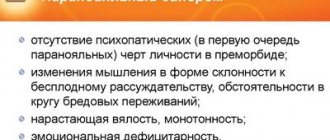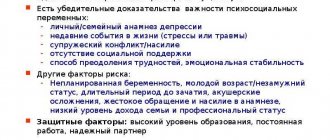History
| « | Having the misfortune of suffering from hallucinatory insanity for two years and retaining after recovery the ability to cause a certain kind of hallucination at will, I was naturally able to notice in myself some of the conditions for the origin of sensory delirium. | » |
| - psychiatrist Kandinsky. | ||
The syndrome is named after Viktor Kandinsky, the second cousin of the artist Wassily Kandinsky. In 1876-1877 Victor served in the navy as a ship’s doctor, participated in the Russian-Turkish War and suddenly felt that he had been “subjected” to the mental attack of the Tsarist secret police. But he seized control in time and went to psychiatry himself, where he was able to describe his experiences in the critical-clinical study “On Pseudohallucinations,” which was highly praised in his works by the luminary of psychiatry, Jaspers. In addition, he is considered the father of Russian forensic psychiatry.
To stop external “influence” on his brain, he committed suicide in the name of conspiracy at the peak of one of the attacks in 1889. through overload with substances.
There is not much interesting about the second half of the syndrome, about Clerambault: he was a similar schizophrenic psychiatrist-schizophrenic from France, “controlled” by Surte (this is a French FSO) and, independently of Kandinsky, described his symptoms of mental automatism.
He also came up with erotic delusions (Clerambault syndrome), the law of his name, and then fell into depression with delusions of guilt and shot himself.
Mental automatisms
Continued - The feeling that someone else can control your thoughts.
The feeling that your thoughts, emotions, movements can be controlled or influenced in some way is a common symptom of disorders of the nervous system, one of the forms of manifestation of mental automatisms.
Such disorders can be either temporary and reversible, not requiring special medical care (benign), or they can also be manifestations of severe mental disorders and behavioral disorders that require urgent psychiatric care.
What is this
It consists of the three most important things that do not occur to the average person and are a set of productive symptoms:
- Pseudo-hallucinations are hallucinations within one’s subjective world, i.e. “music playing behind the wall” is a true hallucination, and “music playing in the head” or perceived by the “spiritual/internal” sense is a pseudo-hallucination. The voices in my head are here too.
- Ideas of influence (mental and physical) - a feeling of the influence of force from the outside: as if they are “putting” thoughts into your head, “speaking” with your mouth and “walking” with your feet. Someone's invisible influence and the action of the cosmos, extraneous forces, persecution are also here.
- The very phenomena of mental automatism: the feeling of one’s thoughts/movements/actions/feelings as if made, unnatural, alienated. This can also be called forced thinking, as if someone is forcing
you to think.
That is, the patient feels the influence of his sick consciousness and hears his thoughts, as if it were a separate part of him - this is not a split personality, this is precisely a “ split of the mind”
" - what is included in the very name of the disease
schizophrenia
.
Pathological automatisms are the most characteristic feature of those patients with schizophrenia who are under the influence of an otherworldly extraneous force, which is most clearly manifested by impulsive actions against the patient’s wishes. This behavior can be dangerous.
Personality pathologies in fur-like schizophrenia
The development of mental defects and the progress of negative personality transformations depend on the pace of the disease. Other characteristics also influence: age, gender, social status, the presence or absence of concomitant pathologies. The most dire consequences are characteristic of malignant juvenile schizophrenia. With this variant of the disease, oligophrenia-like personality defects and problems with intelligence occur.
The risks of severe negative personal transformations are reduced if the onset of the disease occurs in adulthood or old age. Defects are more pronounced in patients who have:
- mental retardation;
- pathocharacterological deviations;
- low level of education;
- lack of achievements in the professional and labor sphere;
- social maladjustment.
Researcher J. Jackson described the principle of mental dissolution, which relates to the occurrence of defects after schizophrenia. The principle indicates that personal transformations first affect the higher parts of the psyche. Further they concern more “ancient” mental functions. That is, at first there is a subtle change in character. Then the defects spread to the deep parts of the psyche, affecting the intellect, thinking, and general mental activity.
The initial symptoms of defects are that the personality acquires disharmony, schizoidization and social isolation occur. Late manifestations - decreased energy potential and intellectual capabilities. A decrease in energy potential means that a person loses the tone of his behavior and actions. There is no desire for goals in life, the level of motivation and range of interests decreases.
G. Huber points out that schizophrenia without treatment leads to irreversible transformations. The departments of higher nervous activity responsible for mental activity suffer. A person loses motivation, initiative, vitality decreases (mental health, feeling of happiness), concentration suffers.
In progressive schizophrenia, the dynamics of personal changes occur according to the type of post-processual development. This means that the negative changes are not too acute, some correlate them with outpatient end states. An important role in the dynamics of the development of defects is given to social, age, and environmental factors. Psychopathic and autistic manifestations change with each subsequent attack of the disease. Defects are not limited to the distortion and elimination of certain characterological characteristics of the individual. A personal shift occurs—characterological traits are globally restructured.
There are several options for post-process defects. The first is asthenic. This is the acquisition of indecision, uncertainty, helplessness. Such a person needs constant support from other people and becomes a dependent person. He has many doubts that arise for any reason. Such patients often need pushes to activity. They are characterized by passivity, subordination, loss, and fear of responsibility. Any activity is limited to performing simple operations. In many life situations, a position of avoidance and a refusal reaction manifests itself.
Another type of defect is autistic. A person’s contact with the surrounding reality is disrupted. He loses his usual social environment and becomes detached. The personality is characterized by autistic interests, recluseness, unsociability, and eccentric behavior. A person becomes indifferent to the life and condition of family members and friends.
Options
All types have one thing in common: the connection of sensations with external influences. Often complemented by delusional symptoms, the result is delusional ideas of influence and persecution.
Ideatorial (associative)
Here, first of all, is the very investment of other people’s thoughts and the feeling of openness of one’s thoughts, which “may” be known to others. The sound of your thoughts appears (normally the act of thinking is inseparable
and
continuous
, it is impossible to look at it “from the outside”) and the alienation of one’s emotions: “they laugh at me,” “they sadden at me,” that is, as if this is not an independent, but a forced act, under
the influence
of something extraneous.
Senestopathic
This includes the entire “space” and devices with rays that cause pseudohallucinations, senestopathies and visceral hallucinations in the patient. That is, it not only seems to him that a surveillance device has somehow been “sewn under his skin” and he “feels” it, but this also happened thanks to unknown malicious rays from another galaxy/from neighbors/magical influences.
Motor (kinesthetic)
The patient considers all movements, including walking and turning his eyes, not his own, but under the influence of others. They “go” by controlling it. A special type of motor automatism is speech motor pseudohallucinations, as if all speech, pronunciation of words and movements of the tongue also occur from external influences, and not of one’s own free will.
Manifestation of mental automatisms
1. A person may experience feelings that someone else can control your thoughts, actions and sensations when poisoning with psychostimulants (amphetamines, methamphetamines, cocaine and others). In addition to thinking disorders, insomnia develops in such states, speech accelerates, impulsive actions and aggressive behavior appear. As a rule, after intoxication with psychostimulants ends, a sound and long sleep sets in, after which the feeling of openness of thoughts and the fact that they can be controlled disappears.
2. With severe alcoholism, passing from the second stage to the third, against the background of alcohol abstinence, after a period of insomnia, a special type of psychosis develops - delirium tremens (popularly known as “delirium tremens”). Such types of delirium have been described in which, with a relatively unclouded consciousness, the patient experiences influxes of sensations that someone else can control your thoughts.
4. The reason for the sensation of control over your other thoughts (in addition to poisoning by alcohol and its half-life products (acetaldehyde, ketone bodies, etc.) is a predisposition to endogenous diseases in the form of a special organization of higher mental functions. The outcome of such psychoses is different: from favorable with complete reverse development symptoms and restoration of thinking, to unfavorable with the development of a progressive endogenous disease with an increase in thinking disorders.
5. It should be noted that conditions in which there are feelings that someone else can control your thoughts can also be experienced by healthy people during periods of overwork or long-term stress.
In such cases, in addition to the sensations of thought control, sleep is disturbed (it becomes difficult to fall asleep, frequent and early awakenings appear).
In cases of overwork, the feeling that someone else can control your thoughts is most often not constant, not clearly expressed, and after resting with long and deep sleep, it stops completely.
It should be emphasized that the feeling that someone else can control your thoughts is a good reason to visit a psychiatrist or psychotherapist to make sure that there is no disease or if, nevertheless, signs of a disorder are identified, it will be possible to begin adequate treatment which requires urgent medical attention.
Back to first page - The feeling that someone else can control your thoughts.
More
- What's next
| [ + ] Kandinsky-Clerambault syndrome? Welcome. | |
| Diseases | Schizophrenia • Drug addiction (Alcoholism) • Depression • Anxiety • Panic disorder • Bipolar disorder |
| States | Deja vu • Kandinsky-Clerambault syndrome • Down syndrome • Magifrenia • Fanaticism • Suicide • Anosognosia • Hysterical coma • Dementia (Oligophrenia • Dementia • Idiot) • ADHD |
| Phobias | Dysmorphophobia • Trypophobia |
Characteristic pathologies
The syndrome of mental automatism is most characteristic of schizophrenia, especially its paranoid form, and has an unfavorable prognosis. Cases of the occurrence of individual automatisms in somatogenic diseases and intoxications have been described; thus, this syndrome is not pathognomonic for schizophrenia.
In most cases, the appearance of this syndrome is associated precisely with schizophrenia, which is especially characterized by ideational automatisms, which in ICD-10 are considered as one of the most important signs of this disease.
Remission
The signs accompanying the interictal period of fur coat-like schizophrenia are also divided into productive, negative, and psychopathological.
Accompanied by the following manifestations:
- productive – a feeling of change in one’s own personality, an overvalued attitude towards one’s condition. Mistrust, suspicion. Paralogical thinking. The presence of strange ideas of a mystical, religious nature. Lack of semantic connections of speech;
- negative – lethargy, decreased activity. Loss of interest in any type of activity, its automatic implementation. Rigidity in relationships with other people, alienation, passivity. Lack of motivation to activity. Poor speech and facial expressions appear. Emotional poverty and social isolation are growing. The understanding of abstract expressions and figurative meanings is lost. The statements are broken and paradoxical. There is unproductiveness of social interaction;
- psychopathological – pathological focus on oneself, one’s own health. Touchiness, demand for attention and care. Detachment from others, loneliness. Reduced volitional efforts. Increased irritability, grumpiness, negativism. The presence of fantastic thoughts, extremely valuable ideas of persecution. Remission in severe cases of the disease is accompanied by delusions and hallucinations. Decreased self-control and self-criticism. Characterized by negativism, aggression, impulsiveness, stereotyping and pretentious movements. Low contact, inability to carry out work activities.








